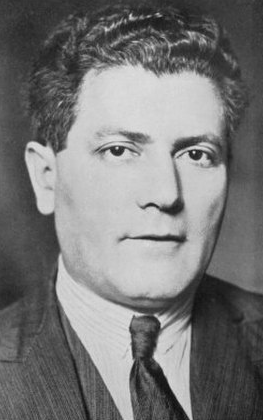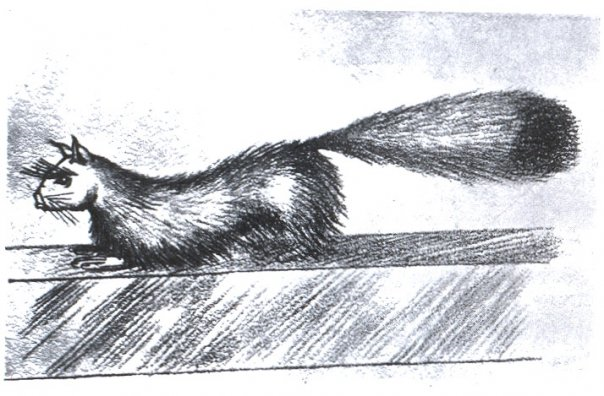Mrs S was recently looking through the various media platforms we seem to be paying for, trying to find a Saturday night movie we could both enjoy. Getting past the regular sequels, remakes, and reboots, she came across a film on Amazon Prime that she reckoned would appeal very much to my skeptical sensibilities. The movie had the whimsical title of Nandor Fodor and the Talking Mongoose.
The film starred the ever-funny Simon Pegg as the titular Nandor Fodor, a real 1930’s parapsychologist, and the ever-brilliant Minnie Driver as his fictional assistant; alongside Christopher Lloyd, Paul Kaye, and the voice of Neil Gaiman as the elusive Gef the Talking Mongoose. The plot revolves around Pegg and Driver investigating the conversational creature that has taken up residence with the Irving family in their remote Isle of Man farmhouse.
This is not a movie critic site, so if you want to get a critique of the film itself, it gets a middling 46% on Rotten Tomatoes; but we quite enjoyed its portrayal of character-driven, whimsical nostalgia.
Though Fodor denies being a skeptic, the character, as portrayed, does demonstrate a healthy scepticism. Indeed, he relates the story of Harry Houdini’s war against spiritualism as something to aspire to. However, the word “skeptic” is levelled at Fodor as a specific accusation from fellow paranormal investigator Harry Price (Christopher Lloyd) when he is less than enthusiastic about visiting the island.
As is the way in movie portrayals of real-life events, shortcuts are used, characters invented or ignored, and liberties taken with reality, but the movie is pretty good at sticking to known facts. So, what are the known facts? Nandor Fodor (1885-1964) was born to a Hungarian family in what is now Ukraine. He had an eventful life: working in New York as a journalist, moving to London, writing books, and chairing several groups investigating mediumship and other paranormal events. Despite his passion for such phenomena, he retained a largely objective, scientific outlook. He had been an associate with Freud in Europe so had an interest in psychoanalysis, believing it had a part to play when investigating psychical phenomena.

After meeting the British newspaper magnate (and Nazi sympathiser), Lord Rothermere, Fodor was persuaded to move to London to write for one of his titles. It was here that he wrote his Magnum Opus: The Encyclopaedia of Psychic Science, thus cementing his reputation as the go-to authority on psychical matters.
There is a good, detailed bio available via Nature if you wish to know more, suffice to say that Fodor’s attitude to what we might call paranormal or supernatural phenomena varied throughout his life and whilst he tried to bring a scientific rigour to his investigations, he nonetheless could display a naivety and credulity in some of his conclusions.
Fodor did indeed visit the Isle of Man on the urgings of Harry Price to investigate Gef, but the story goes back to 1931 when the Irving family (parents James and Margaret, and their 13-year-old daughter, Voirrey) reported that Gef was living with them in their remote farmstead. It was soon picked up by the island’s papers as a slightly humorous local-interest story. The family claimed that Gef was an Indian Mongoose that was born on the sub-continent in 1852, but how it had made its way to the remote Isle of Man farmhouse was never made clear. The portrait of Gef on the Isleofman.com site gives a good description:
He soon had a fine command of English, not to mention a smattering of other languages and a repertoire of songs. A capricious character, he could be highly disruptive and rude at some times; playful and affectionate at others. Gef would catch rabbits to ‘earn his keep’ and make forays to neighbouring farms to spy on their affairs. He also enjoyed riding on the buses around the Island and would return with the latest gossip from fellow travellers. His hiding place was above a boxed-in partition in Voirrey’s bedroom and it was to the young girl that he remained closest.
When reporters from the London papers made their way to the island in search of a public-interest story, the case of the Dalby Spook (as it was known) became a tabloid sensation. However, though Gef made several tantalising appearances, he always remained elusively out of reach.

Mr Irving insisted he too could speak with Gef, and it was at his urging that Harry Price visited the island along with his friend, the editor of The Listener magazine, Richard Lambert. Disappointingly, Gef stayed away from his illustrious visitors. Irving later sent Price some fur and casts of paw prints he claimed were from the elusive mongoose, but experts from the Natural History Museum said the fur was likely from a dog (the family owned a sheepdog) and the prints, though unidentifiable were also likely to be from a dog-like creature.
Nonetheless, Price and Lambert wrote up their account in their book The Haunting of Cashen’s Gap (the farm was in that area of the island), which did some fence sitting as to whether there really was an erudite mongoose living in an IoM farmhouse, or there was a hoax being perpetrated by an imaginative, and likely lonely, teenage prankster with a talent for ventriloquism. But even Price, who was a firm believer in the supernatural world, was unconvinced that there was any real evidence of that in this case.
Price in the book reported that the farmhouse had several hollow wood-panelled walls that “[made] the whole house one great speaking-tube, with walls like sound boards. By speaking into one of the many apertures in the panels, it should be possible to convey the voice to various parts of the house.”
Fodor stayed with the Irvings for a week or so, but the creature remained out of sight and hearing, avoiding any further investigation. Like Price, Fodor remained unconvinced, and he put the phenomena down to a complex Freudian psychoanalysis, claiming Gef was a manifestation of a split personality he believed Mr Irving suffered from.
Whether Gef really was a supernatural creature or was a creation of a family – or at least one of them – looking for publicity, fame, money or just LOLs, we likely will never know for 100% certain. The Irvings left the farm after the war and it was demolished a few years later. The subsequent owner claimed he had shot Gef as vermin (possibly in an effort to deter trespassers and unwanted visitors). Voirrey herself was insistent right up to her death in 2005 that he was not something she had created, however her friends remained firmly unconvinced as one friend, Kathleen Green, recalled many years later in a recorded interview.
Go check out Nandor Fodor and the Talking Mongoose. We did enjoy it and it was nice to see skepticism portrayed in a relatively good light.



